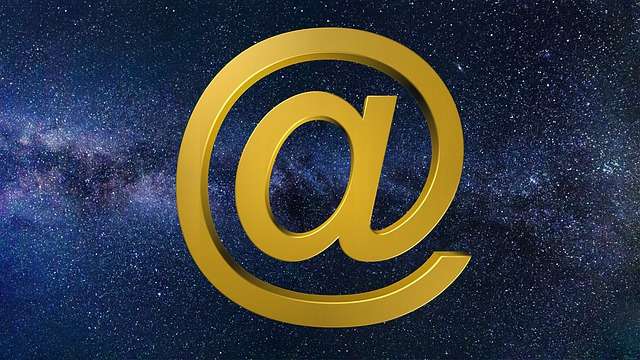
by Suellen | Email Marketing, Online Success
Are your subscribers opening your emails?
Take a look at your open rates. If your emails aren’t being opened, they aren’t being read, of course. So you can see why that piece of your email puzzle is a corner piece. And needs to be in place.
As we approach this subject, think about your own habits. Why do you open some emails and ignore others? As you take a look at the following ideas. See if these apply to you. Why or why not?
There are two major things to look at when you have low open rates. Your subject lines and the time your emails are being sent.
And following you will find a few more as well. Whatever it may be, it is important to figure it out and improve so that your email campaigns will be successful.
Here are six easy ways to help improve your email open-rates:
*Let Your Subject Line Be A Question
Intrigue your audience with an interesting question. Spike the curiosity, but be sure it is relevant to your overall goal and message as a business. Then have your email follow up with answers or suggestions which address the question.
This is one way of making your readers feel involved.
*Use Short, but Detailed, Subject Lines
Your subject line, like a title, is the first thing your subscribers get to see. So, make it count. Spend time crafting one that makes them want to click on it and discover what’s next.
When crafting your subject lines, there are certain words and phrases which provoke interest more than others. These are often called Power Words or Words that Sell. They arouse interest and make people want to take action.
Interestingly enough, some of these words are negative. Like the word “mistakes.” (People often want to avoid mistakes). You can find a list of useful words at Sumo.com
The art of using thought provoking words is an art you’ll want to pursue. You can learn from others and apply new ideas for your subject lines.
Discover Optimum Delivery and Frequency Time
Even if you have great emails and great subject lines, sending them at the wrong time can be a problem. Sending poorly timed emails can destroy your open rates. In addition, email boxes can get crowded, and people fail to see their emails.
Remember, people don’t usually hang out at their email box like they do on social media. Often your subscribers will check their email once, twice, or a few times a day.
It’s not likely for them to scroll through for hours, especially if they just receive hundreds of emails.
So for better effectiveness, find the time your audience is active by testing different times throughout the day for the email campaign you create. Be sure to set a short deadline to track your results to compare which time is best to get your emails synced to their schedule.
Be Conversational and Personable
Write all your content, including emails, as if you are talking to a friend. Yet use a branded tone and style that your audience understands and knows is you. A message that is coming from another human or friend is more likely to get attention and results.
Provide Value Every time
Even if you are doing a sales pitch, always find an opportunity to provide value.
You can always start your emails with something of interest. Some instruction or even some humor. One of the most successful email marketers I know always starts by something interesting that is happening in her life – or around her community. You begin to feel like you know her. Then when she asks for the sale, you trust her.
It’s a terrific way of establishing rapport with your subscribers.
Remember: if you are the only one who gets any value from the email, your success will be short-lived.
Review and Refresh Your List
Be sure the email lists you have are new and updated. Old email lists are likely to have poor open rates.
Maybe people change email accounts or interests over time.Thus, no matter how hard you try, some of your lists will go stale, and it will be up to you to get them off your list. (This is called list hygiene)
List hygiene ensures that you get a better understanding of your real open rate.
Now I know at least one marketer who never takes anyone off her list. She is sure that sometimes people will lose interest for awhile – and then suddenly regain their interest. Over time, these people have been some of her best customers.
So you can see that there are different ways of looking at this hygiene issue. You can decide for yourself. Just know that your open rates will be lower if you always keep everyone – even when they are inactive.
There you have it. Six tips for improving your email open rates. As you approach each idea and put these into practice, you will see better metrics.
More people will read your emails – and more people will buy your products.

by Suellen | Email Marketing, Online Success
Compare your emails – one with another – and you’ll find what works best and improve your bottom line. That’s what testing is all about. And it’s easier than it sounds.
A/B testing, often called split testing, compares the results of two or more similar email campaigns or other materials sent to different audiences.
For instance, you can send one group (Group A) the subject line: Best Tips for Marketing. Then send the other group (Group B) the subject line: Professional Marketing Made Easy. To test, you would need to leave everything else the same. Send the same email at the same time with that that one difference. Then check your open rates and click rates. Which one did the best?
That’s A/B or Split testing in a nutshell. And you can – and should test for titles, time of day you send them, subject matter, and anything else you might think of.
After testing, you can use this information to determine which material converts the best. Thus, allowing you to perfect your email marketing campaigns and funnels more efficiently.
There are several reasons that A/B testing is essential to your email marketing process.
Split testing helps you increase your Open and Click-Through Rates
Improving your overall conversions is the main idea behind split testing. When you test and track these conversions, you can easily see how successful your emails are by how high or low the open and click-through rates are – and which ones are better performers.
Split testing helps you better understand your audience.
A/B testing allows you to watch the behavior of your audience, and see them interact with your content. If certain titles or graphics work better, then you can update your material to this effect. Thus, allowing you to communicate better and increase your overall email marketing conversions.
Split testing increases engagement and content quality
Through split testing, you discover the right ways to communicate with your target audience to improve the quality of your content. An email funnel without quality content suitable for your audience won’t be successful.
Split testing helps you perfect and send the right content to your subscribers. This will help you maintain and increase your effectiveness with your clients.
And now for a few testing tips:
Test One Thing at A Time
Find one area of the email funnel process to test at a time. Only change your titles, then update the email copy after you are done establishing your title. Changing too much information at once can easily cloud the results and make it difficult to understand which change really increased the conversions.
Keep Timing and Schedule Consistent When Checking Content
Be sure email is sent during the same times and day of the week, even though the content is slightly different. This way, you can be sure the metrics you analyze later directly result from the content quality rather than other factors.
Be Sure You Test Against Your Normal Content. (This is called the Control)
This means you always test your normal content versus the new idea to get accurate results. The only way to know if your test content is better is to compare it to your normal content.
Though it sounds like a lot of work, it is worth it. And testing is easier to do when you find a good routine to implement it.
A/B testing gives you the data you need to make better content and email copy for your subscribers. It allows you to perfect your titles, calls-to-action, and more. Thus improving your communication and getting your readers involved and engaged.
You can do this!
And, by the way, most really good email providers have good split testing tools. Check those out with your provider.

by Suellen | Email Marketing, Online Success
Did you know, nearly four billion people worldwide utilize email almost daily?
What is even more interesting is that every second, three million emails are being sent. So that means that by the time you finish this sentence, likely eighteen million emails, give or take, will end up in people’s inboxes. That’s why it’s no surprise that sixty-four percent of successful small business owners have reported that using email marketing has been vital to their success.
It’s also the reason that they continually strive to grow their email lists.
The most common and powerful way to grow your email lists is through what is called “lead magnets.” Free or low-cost material which attracts your potential customer into your buyers’ journey or email marketing campaign.
Lead magnets will vary depending on your niche and are quite low cost if you can craft and complete the material yourself.
Let me say that this is a great place to use PLR (private label rights). You can purchase these packages fairly inexpensively and edit them from top to bottom in order to give them your voice. It’s one reason that I often recommend some of these packs to you. They save time and give you a boost in your business.
Here are five lead magnet tips for growing your email list:
Use How-To Guides or eBooks
I bet that you have opted in to email lists in order to get a free or low cost ebook or guide. I know that I have.
Short guides or how-to eBooks are attractive options to many readers. Most people use the internet to ask questions, to solve a common problem and to gain more knowledge about their favorite things. Thus, eBooks and how-to guides are very attractive.
Understanding your audience and their struggles are key to creating an effective eBook or guide that piques their interest. Nearly thirty percent of marketers prefer this option.
Email Courses and Workbooks
Similar to eBooks, yet a little more involved are email courses and workbooks. These are materials that work together to help your subscriber actively solve or work through a problem.
Instead of downloading all the material at once, your readers will receive their course through weekly and timed emails. Again, keeping an audience engaged for a longer period of time is the goal.
Develop Tips, Templates, and Checklists
Many successful marketers suggest using very simple items like tipsheets, templates and checklists. Their thinking is that people are generally busy and overwhelmed. Something easy is more appealing.
These lead magnets are simple downloadable and printable materials which aid your subscribers in their favorite hobbies or solve their problems. They are affordable and easy to produce.
In addition, these products can often be added to paid product offers as bonuses or extra incentives.
Free Webinar and Trials
One popular idea is to invite your audience to join in on a live webinar where you offer a free trial of your products and services. This can be a great way to ask for email addresses in order to send your link to the webinar.
In addition, the hands-on and live material is often more attractive and easier to digest.
In the internet world, everything can seem impersonal. When you do a webinar, they hear your voice and perhaps see your face. That’s a plus automatically. You are a real live person, and people feel like they know you.
Now, I know that video is scary to lots of people. I get that. However, when you stretch yourself and do things which aren’t that comfortable, you’ll find more success. And more comfort in those areas.
Two things I have learned as I’ve developed my online business:
- All of those people online who act like they know everything and have it all together, are really just like you and me. They are still learning.
- People are hungry to meet real people – just like us. Not perfect. Real.
That’s why you allow the people to see you just as you are. On webinars.
Giveaways
Host contests, offer giveaways and send coupons such as free shipping or birthday discounts to incentivize your subscribers.
It’s hard to pass up a good deal, especially one that provides so much value and excites your interest.
Lead magnets are usually free. Thus, they don’t immediately bring in profit for you, they bring you an interested customer who can continue to bring profit over time.
In fact, a wpforms report stated that marketers saw a 50% increase in signups after using and developing valuable lead magnets.
So think about what your customers want and need. What are some problems you can help them solve? Then plan what you can do to solve the problem.
When you see offers for PLR content, take a good look. You can tweak the material to fit your brand and your purpose. Then offer that in exchange for an email address.
See for yourself. You’ll get lots more customers – and lots more business.

by Suellen | Email Marketing, Online Success
How many of your customers aren’t receiving your emails?
You go to the trouble of writing and sending great emails. Yet some of your customers aren’t receiving them. Why?
It’s called “deliverability,” and it’s an important part of your email plan. If you are sending 100 emails and only 60 are receiving them, there’s a problem.
Email deliverability is about the percentage of your readers who are receiving your emails. Keeping up with this includes monitoring your bounce rate. It also includes increasing the safety and authentication of your emails to ensure your emails aren’t getting rejected by your subscriber’s in box.
In 2003 the US Legislature passed the “Can-Spam Act.” This is a law to prevent unsolicited porn and spam from bombarding your inbox. There are some hefty penalties for people who persist sending such material.
As a result, your email marketing provider is on high alert for marketers who are sending this unwelcome material. They can be fined or even closed down if their clients are sending such material.
One flag for the providers is “low deliverability.” That metric shows how much of the mail is probably going to spam. The spam folder means that the receiving email service rejected the email.
So in order to be more effective and to keep a good reputation with your email provider, here are some ways to improve your email deliverability
Have a Double Opt-in Process
Use double opt-in forms to ensure the information subscribers provide is correct. For example, an incorrect email address or typo can easily lead to your email being rejected. However, double opt-in forms require your readers to confirm their information, thus avoiding this altogether.
You know, that’s the “check your email and click on the confirmation link” response we see often when we sign up. Just be sure to make this requirement clear when signing up; otherwise, it can lead to further confusion.
The double opt-in confirmation means it’s not a robot and that the email address is real.
Establish a Proper Send Schedule
In other words, don’t spam your readers.
If you send too many emails, they won’t see you as trustworthy nor know the content as personalized and valuable. If your content gets marked as spam, eventually, their email service provider will reject you altogether.
And yours might also.
So how many would be too many? Many respected marketers send daily or two or three times a day. If the material is good, that’s fine.
Five times or more a day could seem excessive. It depends on what you are sending. Certainly don’t send that many with just sales pitches in them.
Enable Tools to Authenticate Your Emails
We know that hackers have become more of a problem to all of us. Some have been known to hack email sending addresses and spam clients with porn or predatory content. Obviously, this gives the sender a bad name. (Kind of like identity theft).
The techies have come to the rescue. There are tools available to authenticate and secure your sending ip address – thus stopping such predatory behavior.
A terrific site for such help is SparkPost.com. They have free tools available to help you secure your emails.
Add Easy Unsubscribe Options
This is imperative.
I remember when I had my first unsubscriber. It really hurt my feelings, but that was just being naive.
Since then, I have learned differently. While not something you want to see, it helps improve your deliverability. It keeps those truly interested in seeing your content on the list and screens out those who aren’t interested in your message.
You can “be yourself,” without having to placate those who aren’t really your people.
Implementing guidelines from the Federal Trade Commission, most email service providers require that you add an obvious way for subscribers to opt-out if they want to. This also further authenticates your emails.
To recap: the goal of proper email deliverability is to make sure your content ends up in the subscriber’s inbox in order to be seen and clicked open to be read. If your emails never make it or consistently end up in their spam folder, you won’t see any conversions. In the most extreme cases, you will have to start over – from scratch.
So take a deep breath and go check your email account. It requires mindfulness and a little work, but it’s so worth the effort!!

by Suellen | Email Marketing, Online Success
Do you segment your email lists? In other words, do you divide your lists into groups which are specifically appropriate for them?
Separating your email list subscribers into different segments of your audience is a practice which most marketers recommend.
For instance, if someone has signed up for a free ebook aimed at writing a book, they should be kept in a similar flow of content. You wouldn’t immediately start sending them material pertaining to weight loss.
When subscribers sign up to your email list, they will receive appropriate emails. Not the same emails as people who are in another targeted sequence. Thus, segmentation allows you to better market and communicate with your new potential customers and readers.
Most lists are organized based on three different factors: demographics, location, behavior, and interests.
Depending on your niche and marketing goals, you may need to organize them differently. However, the most popular way to figure your segmentation is to observe their online behavior.
Once they are opted-in to your campaign, readers are then divided based on how they interact with you and your content. Do they open more often than others? Do they click-through links frequently?
If so, it would be good to put them on a different path from those who are less likely to open or click-through your emails. They clearly are interested in your products and information.
There are three main reasons list segmentation is an important step in your email marketing process:
Segmentation Allows You to Send More Targeted Information
Most businesses will have more than one buyer’s persona, which means not every email you send needs to go to every lead or customer on your list. It also means you likely have more than one goal in mind when it comes to email marketing.
Segmenting allows you to pick certain keywords or information in order to organize and better target your customers with different key pieces of content.
For example, readers who have bought your products are more likely to get content about the products they purchased or new products to try. On the other hand, new subscribers who have not purchased a product, will be reading content on why the products benefit their life. Or perhaps information about you and your business, getting to know you better.
By observing the behavior of these new customers, you can also get to know them better. Here you could add surveys or questions to increase your understanding of these new people.
Segmentation helps you to increase overall conversions
List segmentation better targets your readers, which allows you to communicate more effectively. When you understand which point of the buyers’ journey they are on, then you have a better chance of making sales.
Segmentation improves your engagement and your reputation
Understanding your audience and communicating with them appropriately are keys to increasing your conversions and running successful email campaigns. Better communication provides more value to your customers. As you send appropriate material, you are further building your reputation and improving your engagement—two important metrics for creating a sustainable business.
The bottom line is this: the reason for list segmentation is to ensure the right emails are being sent to the right people.
With that in mind, it’s easy to see that with segmentation you are setting yourself up for greater success in achieving your email marketing goals.
Though it can require some thought and action, segmentation is worth the extra effort.
You’ll be glad that you took the time.
















